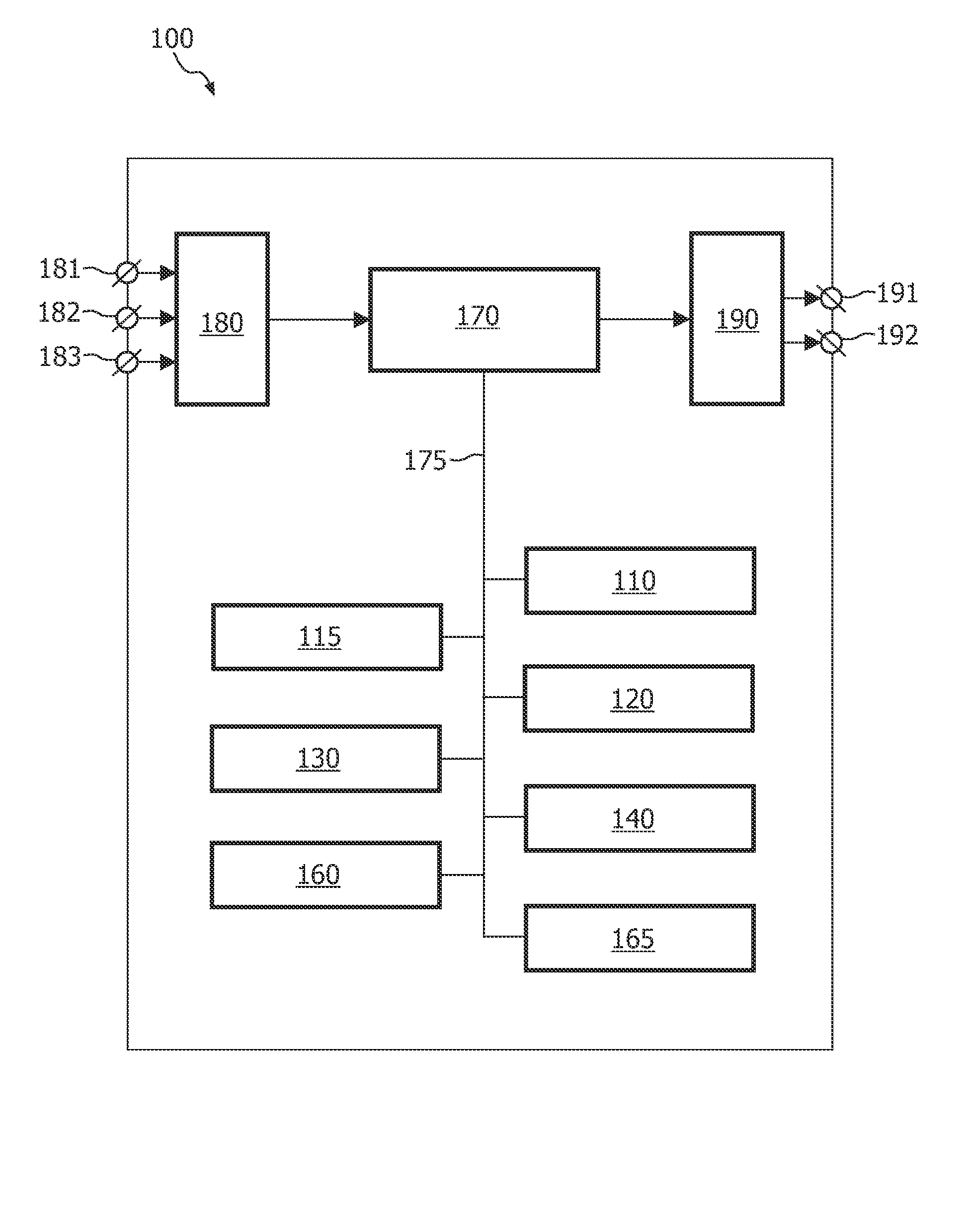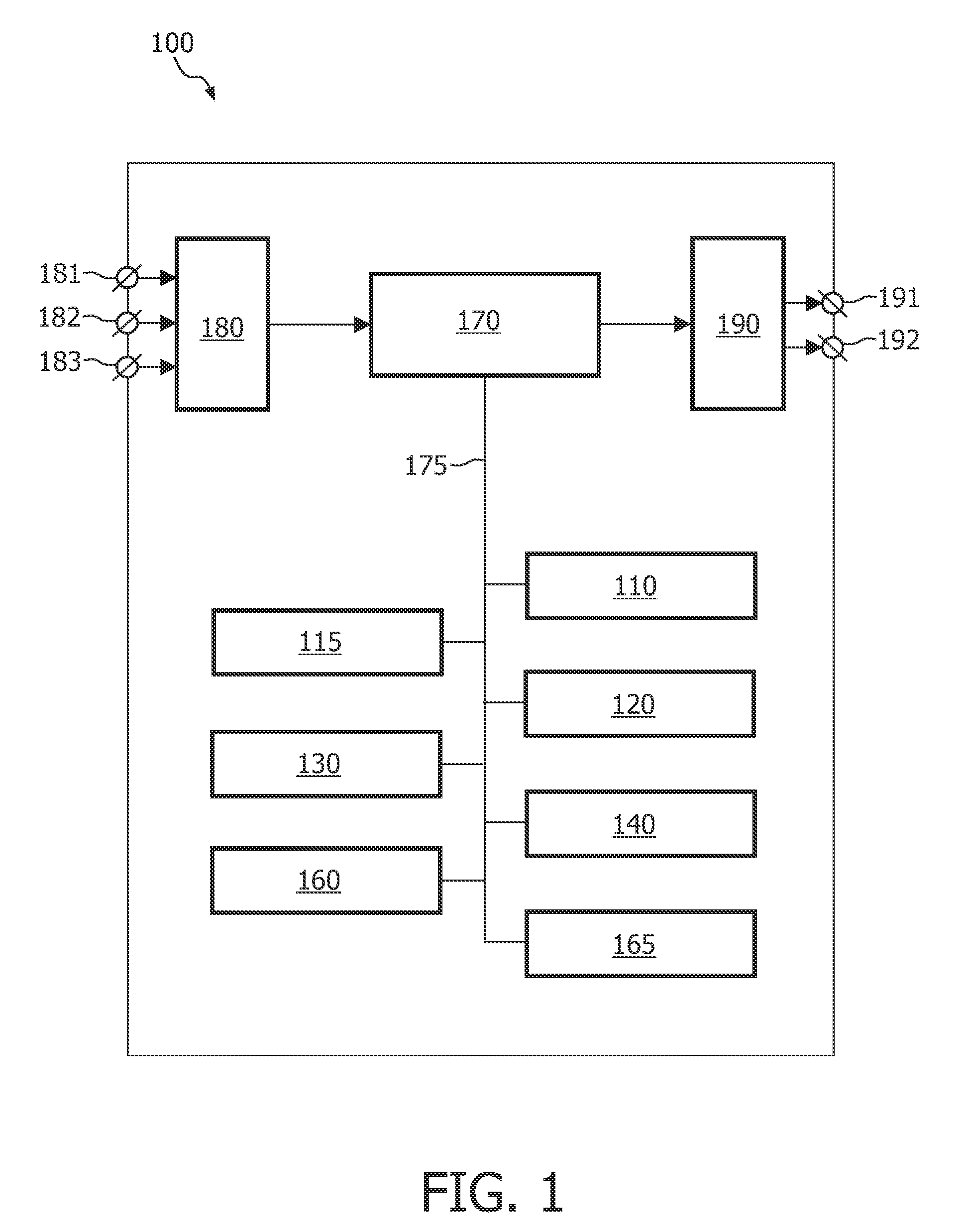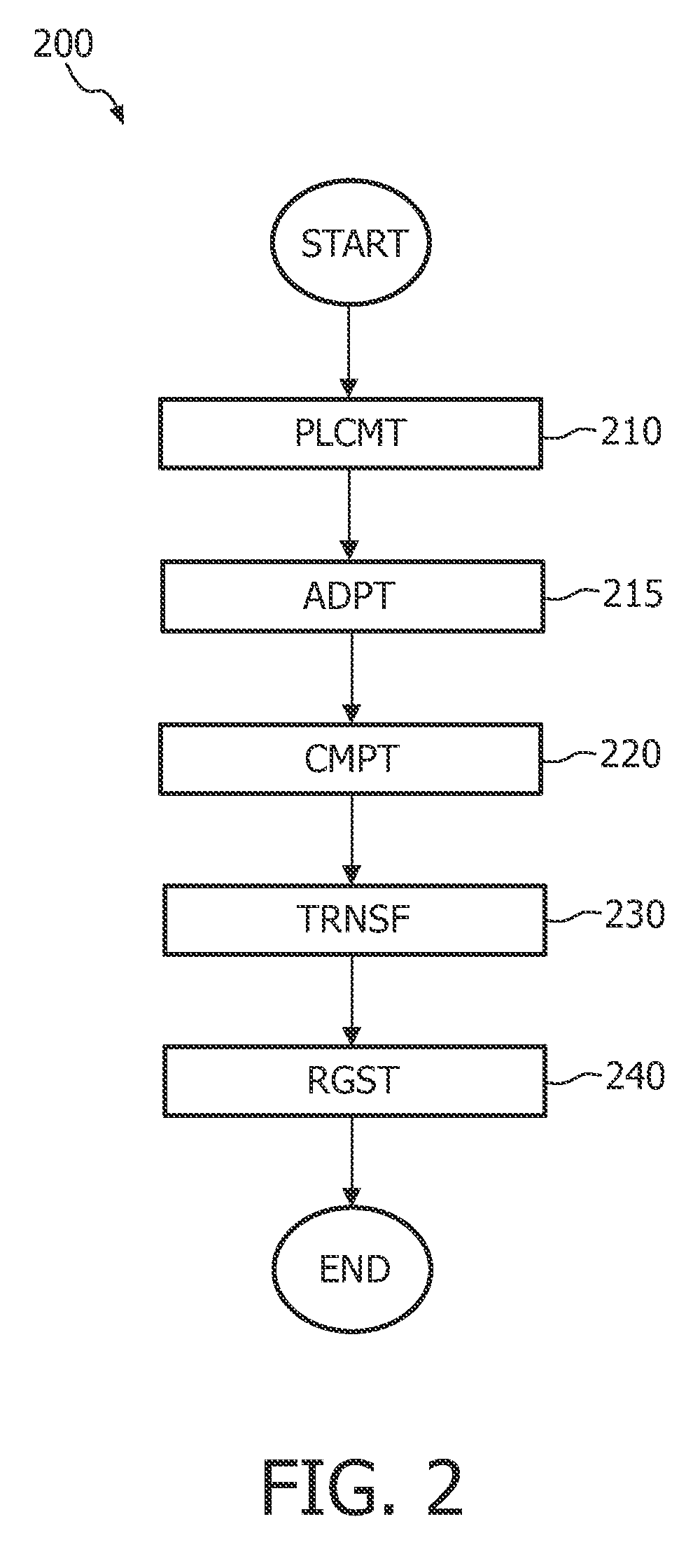Model-based coronary centerline localization
- Summary
- Abstract
- Description
- Claims
- Application Information
AI Technical Summary
Benefits of technology
Problems solved by technology
Method used
Image
Examples
Embodiment Construction
[0037]FIG. 1 schematically shows a block diagram of an exemplary embodiment of the system 100 for registering a vessel model with an image data set based on a joined model comprising a reference object model and the vessel model, the system comprising:
[0038]a placement unit 110 for placing the joined model in a space of the image data set, thereby creating a placed joined model comprising a placed reference object model and a placed vessel model;
[0039]a computation unit 120 for computing a deformation field based on a landmark displacement field comprising displacements of landmarks of the placed reference object model relative to corresponding landmarks in the image data set;
[0040]a transformation unit 130 for transforming the placed joined model using the deformation field, thereby creating a transformed joined model comprising a transformed reference object model and a transformed vessel model; and
[0041]a registration unit 140 for registering the transformed vessel model with the...
PUM
 Login to View More
Login to View More Abstract
Description
Claims
Application Information
 Login to View More
Login to View More - R&D
- Intellectual Property
- Life Sciences
- Materials
- Tech Scout
- Unparalleled Data Quality
- Higher Quality Content
- 60% Fewer Hallucinations
Browse by: Latest US Patents, China's latest patents, Technical Efficacy Thesaurus, Application Domain, Technology Topic, Popular Technical Reports.
© 2025 PatSnap. All rights reserved.Legal|Privacy policy|Modern Slavery Act Transparency Statement|Sitemap|About US| Contact US: help@patsnap.com



